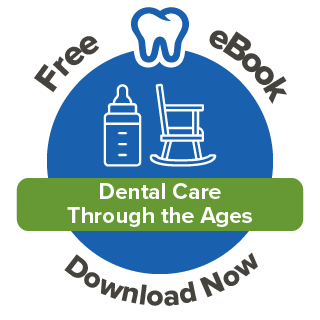By Astrid Graterol on Apr 24, 2020 @ 11:00 AM
If you didn't think you had a reason to floss everyday, this blog will change your mind. Bad breath, also known as halitosis, is more common than many people realize. In fact, it affects about 31.8% of the population. You may joke about you or someone else having bad breath, but it’s an important oral health issue and can be a sign to a serious problem.
Key Takeaways:
- Bad breath, or halitosis, affects 31.8% of people
- Your floss can help tell you if you have bad breath
- Halitosis is caused by food particles between the teeth
- Floss and brush daily to keep halitosis at bay
- Drink lots of water and maintain a balanced diet
Detection
Ever tried to check your breath by cupping your hands in front of your mouth and quickly inhaling through your nose? Odds are, you have, and you probably thought it smelled just fine. However, you weren't really giving yourself an objective opinion. An easier, more private, way to test your breath is to floss your teeth and then inspect and smell the floss. If you notice a nasty odor, or blood on the floss, you have bad breath.
Causes
Halitosis can be caused by a number of different things. In the vast majority of cases, the teeth, gums, and tongue are the source of the odor. This is caused by food particles that become lodged between the teeth. Over time, this causes a build-up of bacteria, which release odoriferous gases. Also, certain types of food could be the culprit. Garlic, onions and spicy foods are notoriously noxious, even hours after they're consumed.
Treatment
The best way to control bad breath is with good oral hygiene. However, you cannot count on brushing alone to remove the plaque and food. It is imperative that you use dental floss every time you brush. Floss gets down between teeth and gums and loosens food particles so they can be rinsed out.
When you floss, you disrupt the growth of bacteria between the teeth, stimulate blood flow to the gums that helps to fight bacteria in and under the gums, and also take out loose food particles stuck between the teeth. Together, all three of these effects help to limit bad breath. Both by attacking the bacteria themselves and eliminating the food particles fight the cause of bad breath. Regularly brushing and flossing your teeth can help control bad breath and keep your teeth and gums healthy. Here's how you can properly floss your teeth:
- Break off about 18 to 24 inches of dental floss. To hold the floss correctly, wind most of the floss around both of your middle fingers. Leave only about 1 to 2 inches of floss between your fingers for your teeth.
- Next, hold the floss taut with your thumbs and index fingers.
- Place the dental floss in between two teeth. Gently glide the floss up and down, rubbing it against both sides of each tooth. Be careful to not glide the floss into your gums. This can scratch or bruise your gums.
- As the floss reaches your gums, curve the floss at the base of the tooth to form a C shape. This allows the floss to enter the space between your gums and your tooth.
- Repeat the steps as you move from tooth to tooth. With each tooth, use a new, clean section of floss.
Drinking plenty of water is another way to control your mouth odor. A healthy diet, consisting of watery, raw fruits and vegetables is also highly recommended. Finally, make and keep regular appointments with the dentist for checkups and cleanings. Not only will your breath smell better when you follow these simple guidelines, but you'll have healthier teeth and gums and your overall health will improve. Want to learn more ways to fight bad breath? Download our FREE guide by clicking the image below!
Want to have Solstice benefits? Call our sales team at 877.760.2247 or email Sales@SolsticeBenefits.com
Already have Solstice benefits? See your plan details by going to https://www.mysmile365.com/ or calling us at 1.877.760.2247.





comments